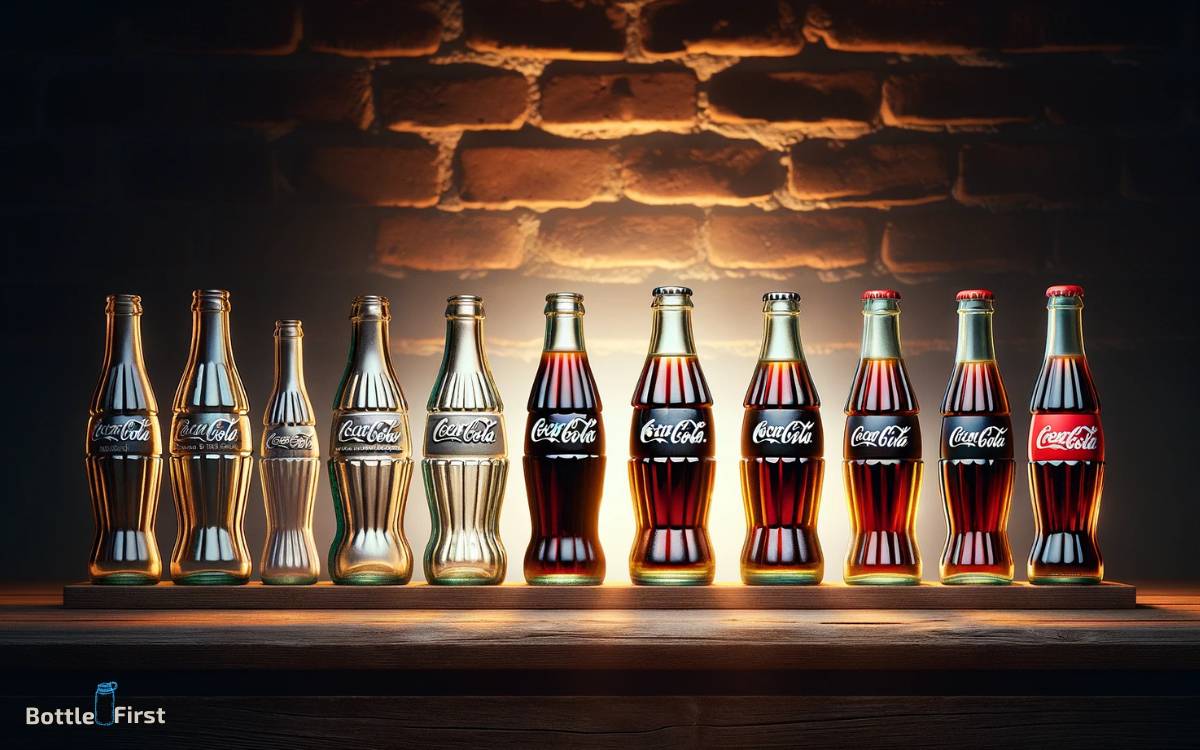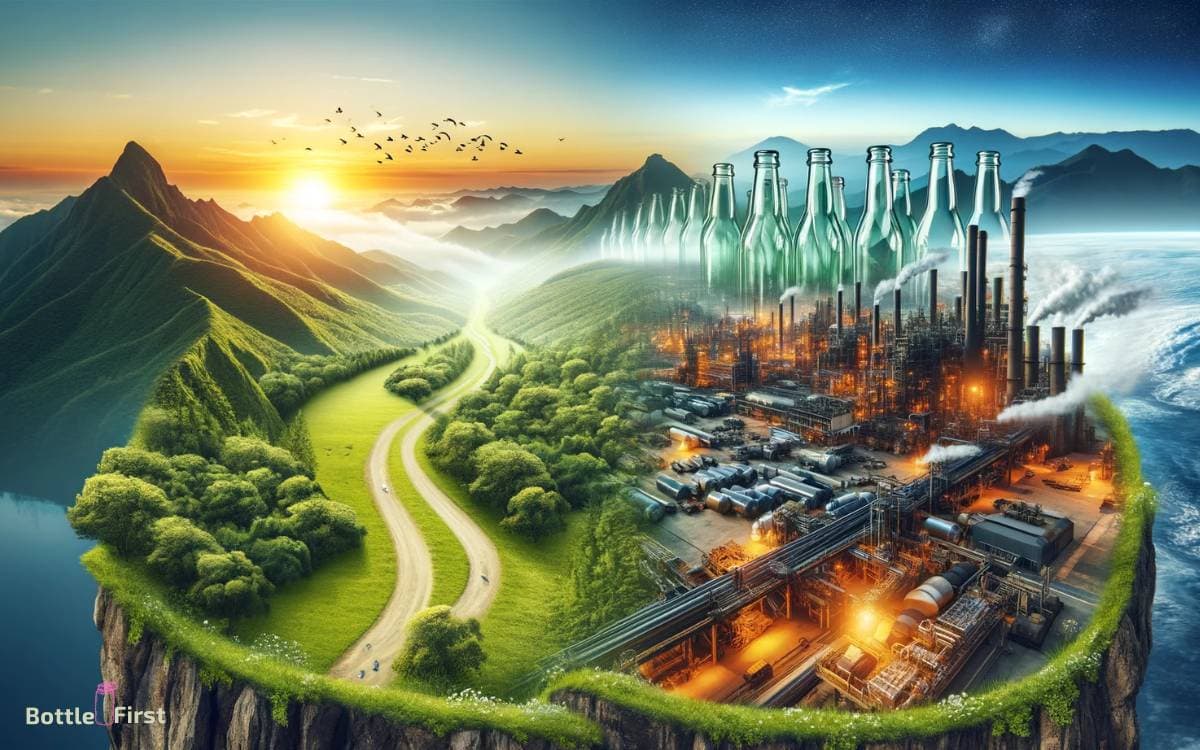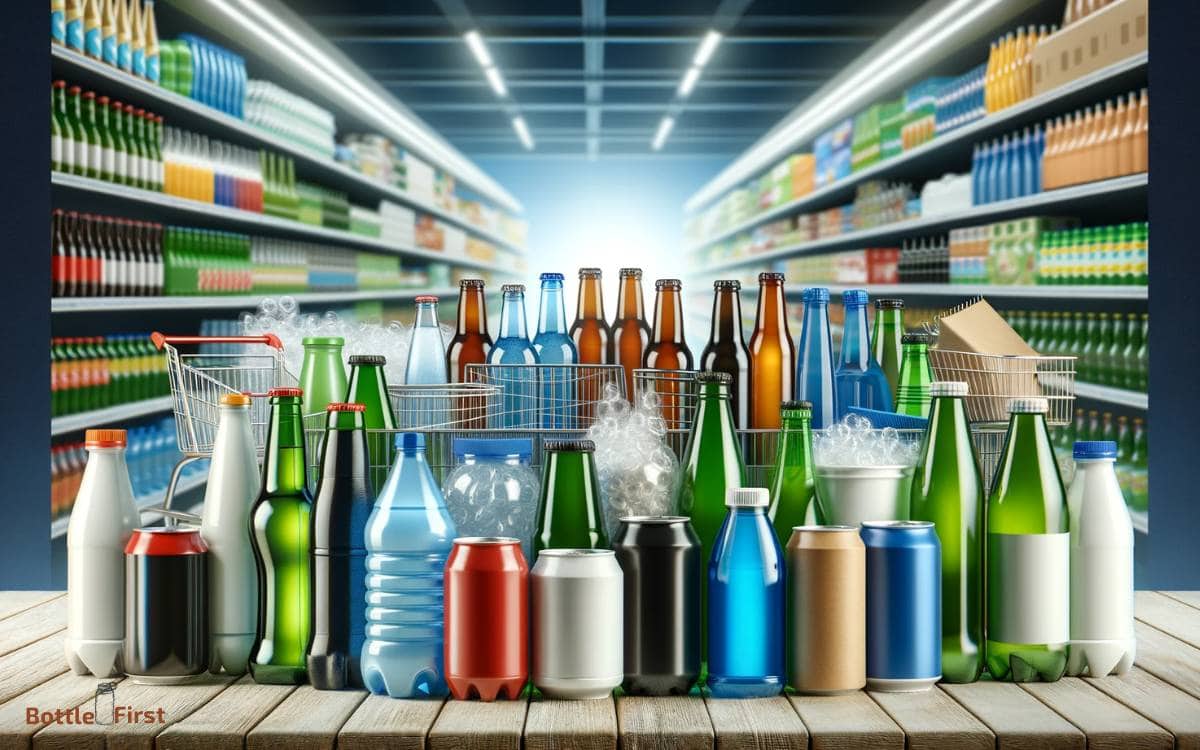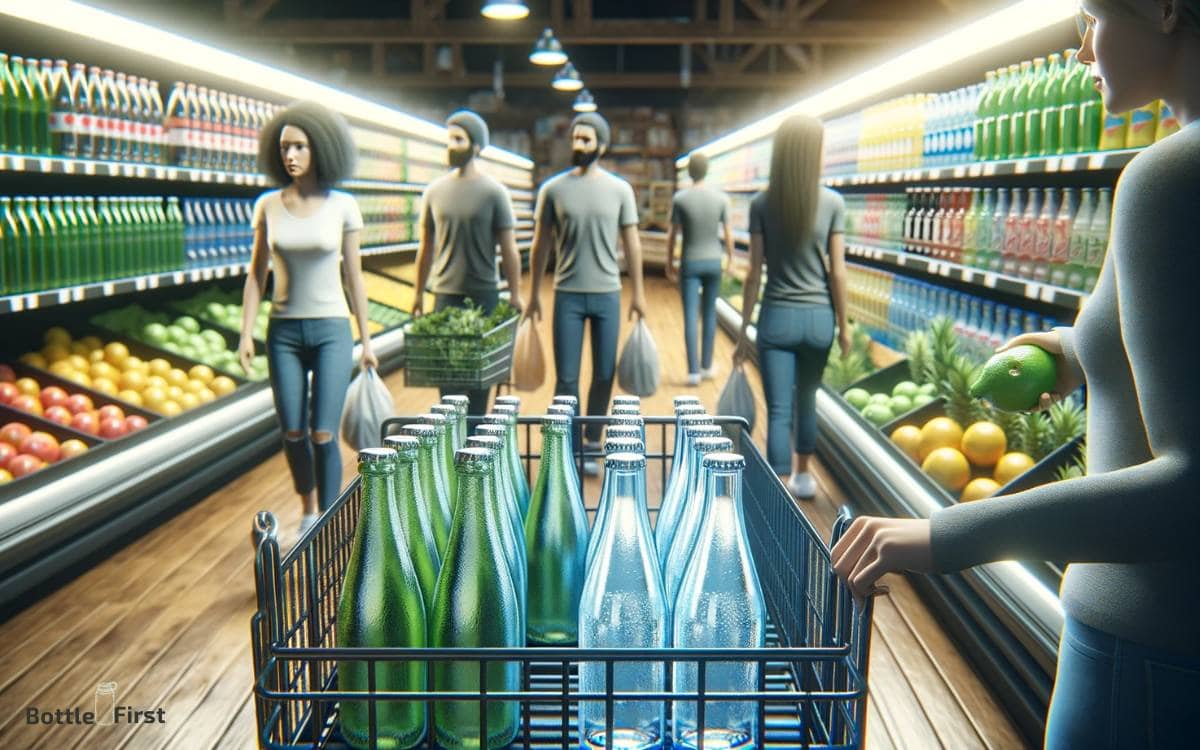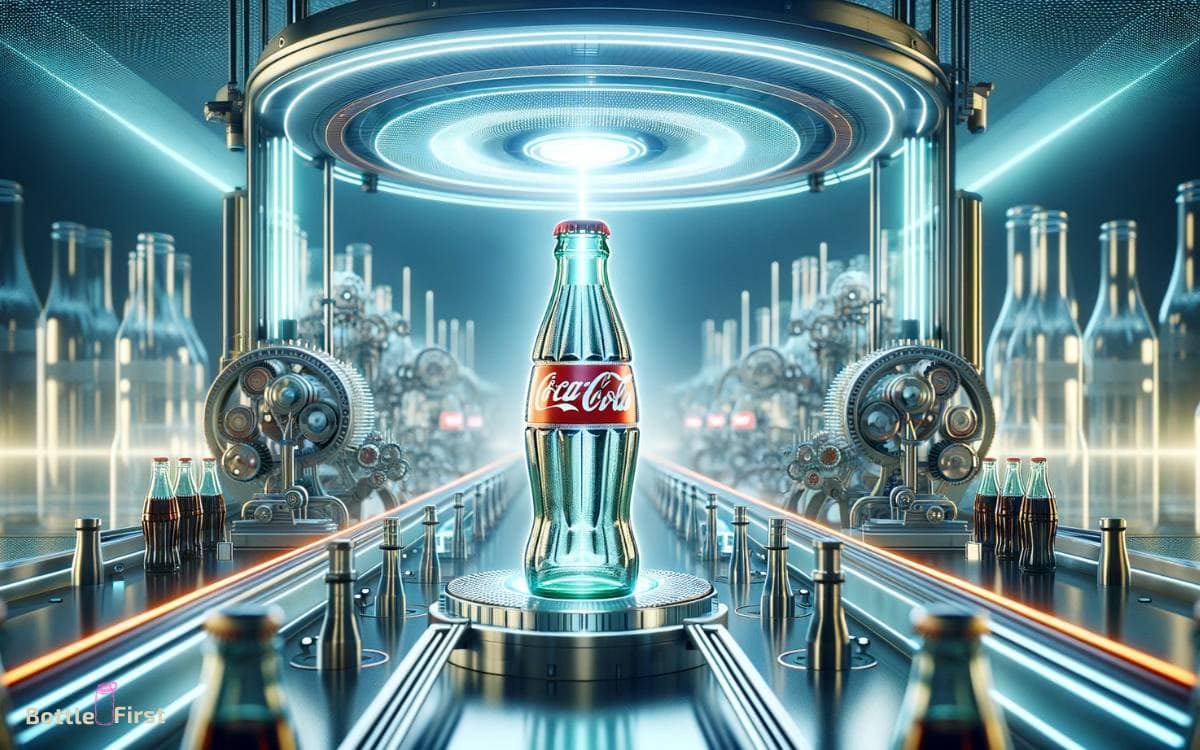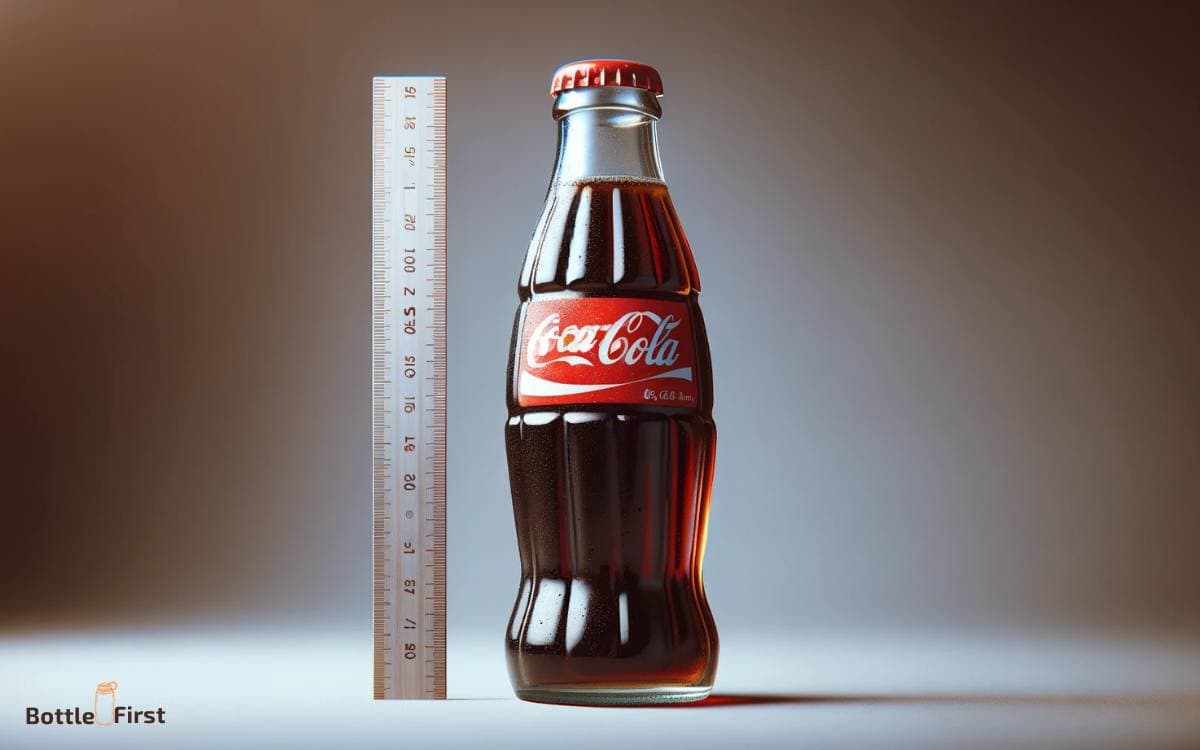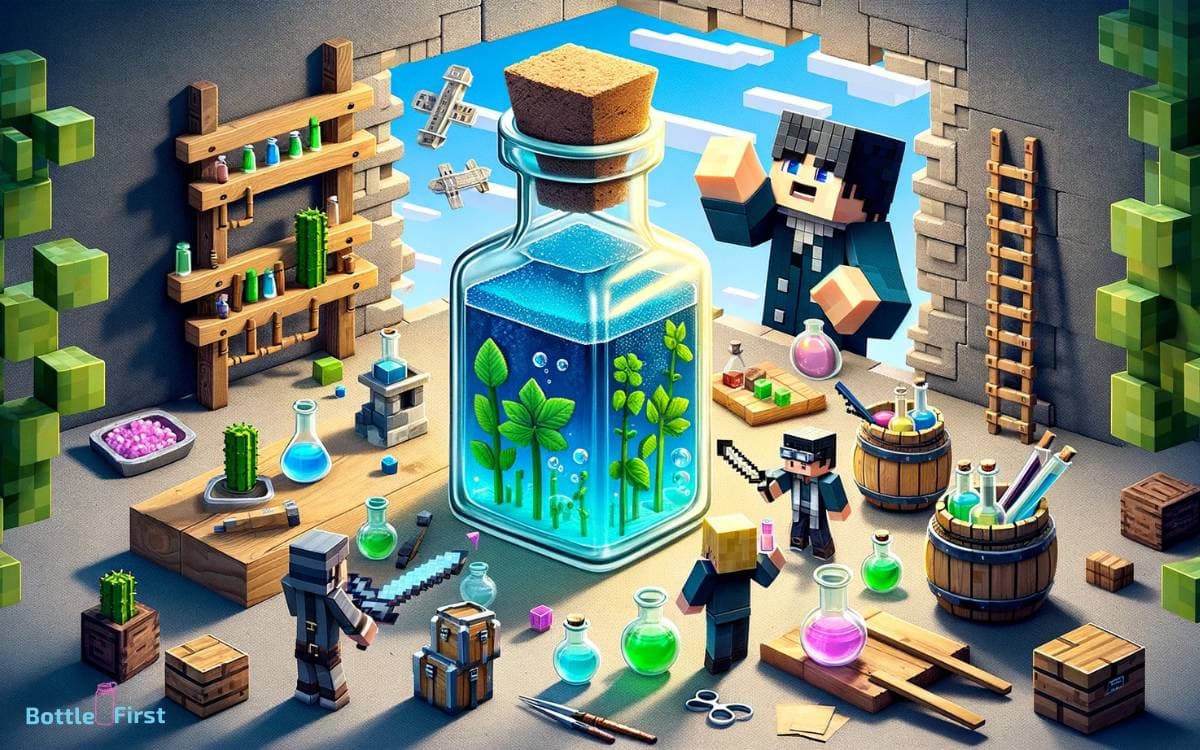Does Coca Cola Still Make Glass Bottles? Yes!
Yes, Coca-Cola is still producing its beloved beverages in glass bottles. Coca-Cola has maintained the tradition of offering its drinks in glass bottles since its inception in 1894.
While plastic bottles and aluminum cans have become common, glass bottles remain a significant part of Coca-Cola’s packaging lineup.
Here’s why:
Coca-Cola’s commitment to glass bottles reflects its dedication to tradition and consumer choice in packaging options.
These iconic containers are available globally and cater to those who appreciate the classic look and feel of glass packaging.
Key Takeaway
History of Coca Cola’s Glass Bottles
If you’re wondering about the history of Coca Cola’s glass bottles, let’s take a trip back to the early 1900s when these iconic containers first made their debut.
The innovative concept of bottling Coca Cola originated in 1894 when a Mississippi-based soda fountain operator, Joseph Biedenharn, bottled the drink to make it more portable.
However, it wasn’t until 1916 that the famous contoured glass bottle, designed to distinguish Coca Cola from imitators even in the dark, was introduced. The unique shape and distinct grooves became a trademark of the brand.
Coca Cola’s glass bottles have evolved over the years, but their historical significance and timeless appeal continue to captivate consumers.
This journey through time reflects the brand’s commitment to innovation and its enduring legacy in the beverage industry.
Current Status of Glass Bottle Production
Yes, Coca Cola still produces glass bottles for its beverages. In fact, the company has been making significant strides in innovating its glass bottle production.
The latest advancements in glass manufacturing technology have enabled Coca Cola to enhance the sustainability and eco-friendliness of its glass bottles.
By implementing cutting-edge techniques, such as lightweighting and using more recycled glass in the production process, Coca Cola has minimized the environmental impact of its glass bottle production while maintaining the iconic appeal and quality of the packaging.
Additionally, the company continues to explore new designs and shapes for its glass bottles, catering to the evolving preferences of consumers.
Rest assured, Coca Cola’s commitment to producing glass bottles remains steadfast, with a strong focus on sustainability and innovation.
Environmental Impact of Glass Packaging
You can’t overlook the environmental impact of glass packaging in Coca Cola’s production process.
Here’s why it matters:
- Energy Consumption: Glass production requires a significant amount of energy, contributing to CO2 emissions.
- Transportation: Glass bottles are heavier than other packaging materials, leading to higher transportation emissions.
- Recycling Challenges: While glass is infinitely recyclable, the collection and recycling processes can be inefficient and costly.
- Fragility: Due to its breakability, glass packaging can result in more waste and energy usage in handling and transportation.
Considering these factors, it’s clear that the environmental impact of glass packaging is substantial.
As a result, companies like Coca Cola are exploring innovative alternatives to minimize their ecological footprint.
Now, let’s delve into the exciting world of ‘alternatives to glass bottles’.
Alternatives to Glass Bottles
If you’re looking for alternatives to glass bottles, you’ll be interested in exploring options like aluminum cans and PET plastic bottles.
Both of these alternatives offer convenience and portability, while also being recyclable.
When considering these alternatives, it’s important to take into account the environmental impact of each option to make an informed choice.
Aluminum Can Options
Coca Cola offers aluminum cans as an alternative to glass bottles for its products. The company provides a range of innovative aluminum can options that cater to your desire for sustainability and convenience.
Here’s what you can expect from Coca Cola’s aluminum can alternatives:
- Sleek and modern designs that appeal to your sense of style.
- Lightweight and easy to carry, perfect for on-the-go consumption.
- Enhanced recyclability, aligning with your commitment to environmental responsibility.
- Innovative resealable options for enjoying your beverage at your own pace.
With Coca Cola’s aluminum can alternatives, you can enjoy your favorite drinks in a sustainable and convenient manner, wherever you go.
Now, let’s delve into the next alternative: ‘pet plastic bottles’.
PET Plastic Bottles
When considering alternatives to glass bottles, one compelling option offered by Coca Cola is the use of PET plastic bottles.
These bottles aren’t only lightweight and durable but also highly recyclable, making them an innovative choice for environmentally conscious consumers.
Coca Cola has been at the forefront of developing sustainable packaging solutions, and PET plastic bottles are a prime example of their commitment to reducing environmental impact.
The company continues to invest in research and development to improve the sustainability of PET bottles, ensuring that they remain a viable and eco-friendly packaging option.
With advancements in technology and design, PET plastic bottles offer the convenience of on-the-go consumption while aligning with Coca Cola’s sustainability goals.
Embracing PET plastic bottles signifies a step towards a more sustainable future without compromising on product quality or convenience.
Environmental Impact Considerations
Considering alternatives to glass bottles, embracing PET plastic bottles signifies a commitment to reducing environmental impact while maintaining product quality and convenience.
PET plastic bottles offer innovative solutions to minimize environmental impact, such as:
- Lightweight Design: PET bottles are lighter than glass, reducing transportation emissions and energy consumption.
- Recyclability: PET plastic is highly recyclable, contributing to a circular economy and reducing landfill waste.
- Durability: PET bottles are shatter-resistant, minimizing product waste and potential hazards.
- Resource Efficiency: PET plastic production requires less energy and resources compared to glass, further lessening environmental impact.
Transitioning to PET plastic bottles not only aligns with sustainability goals but also meets the demand for efficient and eco-friendly packaging solutions.
This shift reflects a growing awareness of the environmental impact of packaging materials and an increasing consumer preference for sustainable options.
Consumer Demand for Glass Packaging
If you’re wondering about the demand for glass packaging, it’s important to consider its sustainability and eco-friendly attributes.
Consumers are increasingly seeking out products in glass containers due to their recyclability and minimal environmental impact.
Understanding the market demand for glass packaging can shed light on the future of sustainable packaging options.
Glass Bottle Sustainability
You may wonder about the sustainability of glass bottles and the consumer demand for glass packaging.
Here’s some insight to satisfy your curiosity:
- Eco-Friendly: Glass bottles are 100% recyclable and can be endlessly reused, reducing environmental impact.
- Consumer Preference: Many consumers are increasingly drawn to glass packaging due to its perceived quality and safety for food and beverages.
- Innovation in Production: Advanced glass manufacturing techniques have made the process more energy-efficient and environmentally friendly.
- Brands’ Commitment: Major brands like Coca-Cola are responding to consumer demand by continuing to offer their products in glass bottles, showing a commitment to sustainability and meeting consumer needs.
As consumer demand for sustainable packaging grows, glass bottles remain a popular choice, supported by innovations in production and a commitment to eco-friendly practices.
Market Demand for Glass
In today’s market, consumers continue to drive the demand for glass packaging due to its perceived quality and environmental benefits, making it a popular choice for brands like Coca-Cola.
The appeal of glass lies in its ability to preserve the taste and quality of beverages without leaching harmful chemicals.
Additionally, consumers are increasingly environmentally conscious, and glass is seen as a sustainable packaging option due to its recyclability and reusability.
Brands are responding to this demand by prioritizing the use of glass bottles, offering a premium and eco-friendly image.
The transparency of glass also allows consumers to see the product, enhancing the overall experience.
As consumer preferences continue to evolve, the market demand for glass packaging remains strong, prompting companies to innovate and expand their glass bottle offerings.
Environmental Impact of Packaging
Glass packaging accounts for approximately 30% of Coca-Cola’s total packaging, reflecting consumer demand for environmentally friendly options.
As a consumer-driven company, Coca-Cola recognizes the growing interest in sustainable packaging solutions.
Here’s why glass packaging aligns with environmental innovation:
- Recyclability: Glass bottles can be recycled endlessly without losing quality, reducing the demand for raw materials.
- Reduced environmental impact: Glass production emits fewer greenhouse gases compared to plastic or aluminum.
- Preservation of taste and quality: Glass packaging ensures the preservation of Coca-Cola’s iconic taste and quality, without leaching harmful chemicals.
- Consumer preference: Many consumers perceive glass packaging as a premium, eco-friendly option, driving the demand for Coca-Cola products in glass bottles.
Coca-Cola remains committed to meeting consumer demand for sustainable packaging while delivering an exceptional product experience.
Coca Cola’s Future Plans for Glass Bottles
Coca Cola aims to optimize the sustainability of its glass bottle production. The company is committed to innovating its manufacturing processes to reduce environmental impact.
Here’s a glimpse of Coca Cola’s future plans for glass bottles:
| Initiative | Description | Timeline |
|---|---|---|
| Lightweighting | Developing lighter glass bottles to minimize material usage and emissions | Within 2 years |
| Closed-loop recycling | Implementing a closed-loop system to increase glass bottle recycling | Within 3 years |
| Renewable energy adoption | Transitioning to renewable energy sources for glass bottle production | Within 5 years |
These initiatives showcase Coca Cola’s dedication to sustainable innovation, ensuring that glass bottles remain a viable and eco-friendly packaging option for the future.
How Big Is a Glass Coke Bottle
Coca-Cola bottles come in various sizes and shapes, but one of the most iconic and recognizable versions is the classic glass Coca-Cola bottle, often referred to as the “Coke bottle” or “contour bottle.”
The most common size for the classic glass Coke bottle is:
- 8 fluid ounces (237 milliliters): This is a standard small serving size and is commonly found in vintage-style Coca-Cola bottles.
However, Coca-Cola is available in a range of other bottle sizes, including 12 ounces, 16.9 ounces, and larger sizes like 20 ounces and 2 liters.
The specific size you encounter may depend on the country, market, or packaging preference of the manufacturer or distributor.
It’s important to note that the size and shape of Coca-Cola bottles can vary, and over the years, Coca-Cola has introduced various limited-edition or commemorative bottles with unique designs and sizes.
Additionally, plastic and aluminum cans have become increasingly popular packaging options for Coca-Cola products alongside the classic glass bottles.
What to Do with Glass Bottles in Minecraft
In Minecraft, you can use glass bottles for various purposes, primarily related to brewing and potion-making.
Here are some common activities you can do with glass bottles in the game:
Gather Water:
You can use glass bottles to collect water from any water source, such as rivers, lakes, or even rain. Simply right-click (or use the interact button on your platform) while holding an empty glass bottle when near a water source to fill the bottle with water.
Brew Potions:
Glass bottles are a crucial ingredient for brewing potions. You can use them to collect various potion ingredients, like water, potions of water breathing, dragon’s breath, and certain potion effects (e.g., potion of strength, potion of healing).
To do this, approach the appropriate source or brewing stand and right-click with the glass bottle.
Craft Splash Potions:
You can craft splash potions by combining regular potions with gunpowder. These splash potions can be thrown to affect a specific area with the potion’s effect. Glass bottles are needed to create the initial potions that you’ll turn into splash potions.
Use as Decoration:
You can use glass bottles as decorative items in your builds. They can be placed on various surfaces, such as tables, shelves, or potion-making areas, to give your creations a more realistic and immersive feel.
Trade with Villagers:
In some cases, villagers may offer glass bottles as part of their trade options. You can trade emeralds with these villagers to acquire more glass bottles.
Remember that glass bottles in Minecraft are reusable, so after using them for potion-making or collecting water, you’ll get empty glass bottles back, which you can use again for various purposes.
Conclusion
So, there you have it – Coca Cola still makes glass bottles, despite the rise of plastic and aluminum packaging.
While they may not be as common as they once were, glass bottles remain a symbol of nostalgia and sustainability for many consumers.
As the saying goes, ‘old is gold’, and it seems that Coca Cola’s commitment to providing their classic beverage in glass bottles will continue to stand the test of time.


